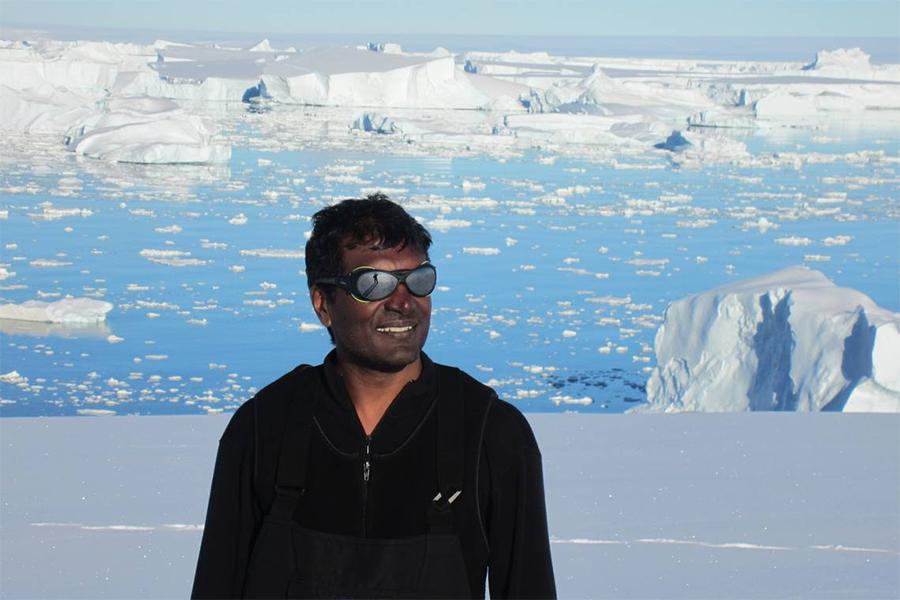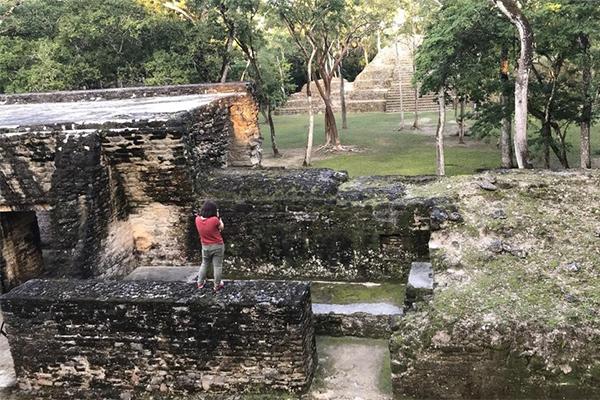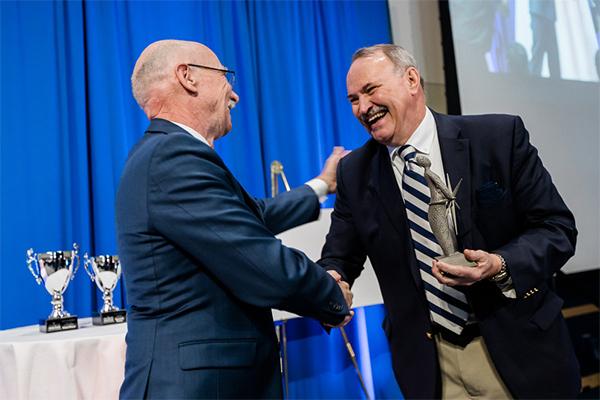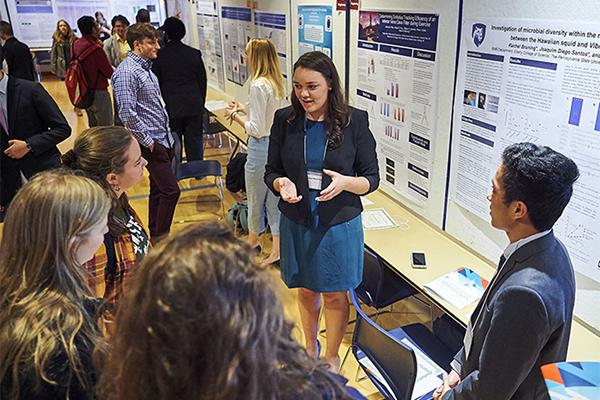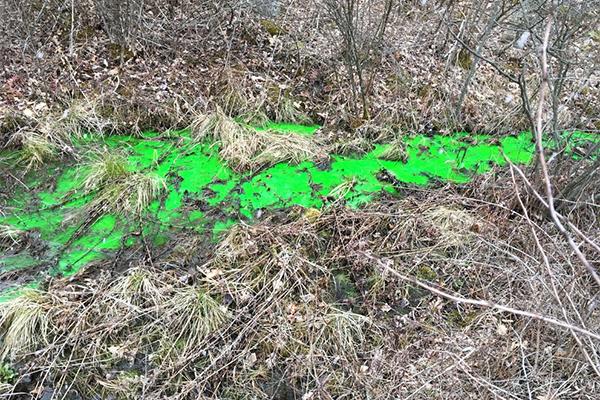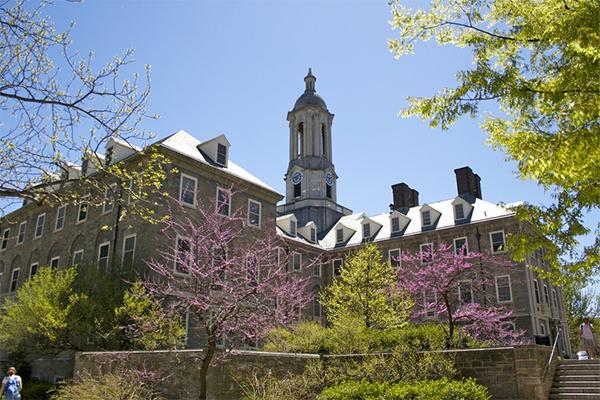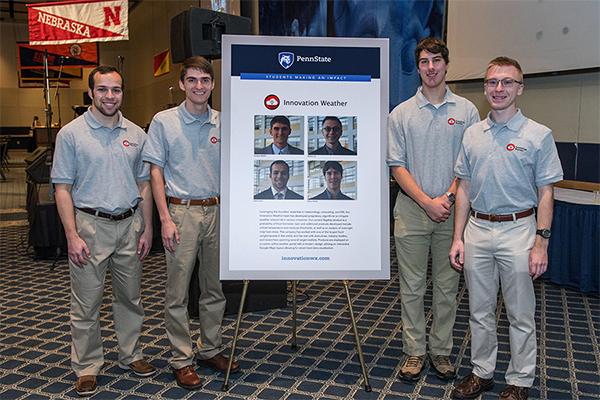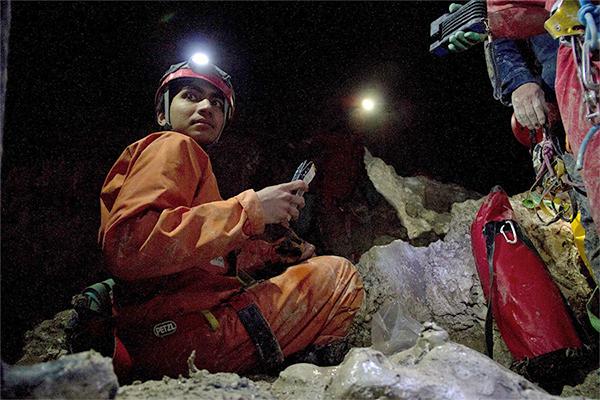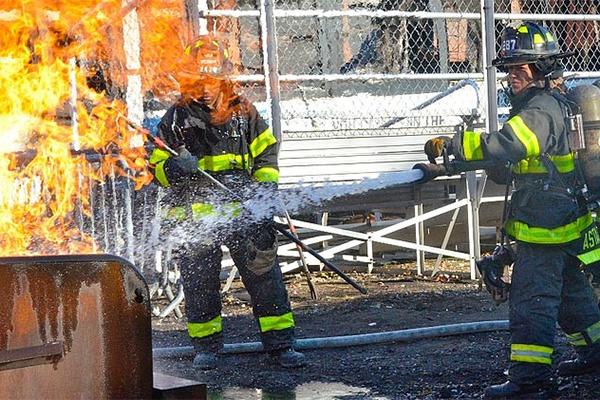Read the latest news about research conducted by investigators in the College of Earth and Mineral Sciences. Our faculty and students are continually advancing technology, creating solutions and expanding knowledge with new and innovative research.
News
The National Science Foundation and the United Kingdom's National Environmental Research Council are the forces behind eight new initiatives in Antarctica to determine how quickly a massive glacier could collapse. Penn State is part of two of these projects, GHOST and MELT.
Ancient Mayan civilization in Central America, which collapsed around 1,000 years ago, is being brought to life in a new Penn State project. Two doctoral students in geography, Jiawei Huang and Arif Masrur, have recreated the Mayan ruins of Cahal Pech, in Belize, using virtual reality.
James Adair, professor of materials science and engineering, biomedical engineering and pharmacology, was awarded the Invent Penn State "Inventor of the Year" award, Friday, April 20, at the Invent Penn State Venture & IP Conference awards ceremony.
A new material that is both highly transparent and electrically conductive could make large screen displays, smart windows and even touch screens and solar cells more affordable and efficient, according to a Penn State team of researchers led by Roman Engel-Herbert, associate professor of materials science and engineering.
Hundreds of students and judges bustled about in the HUB-Robeson Center Wednesday evening for the 2018 Undergraduate Research Exhibition on the University Park campus of Penn State. From musical presentations in the Flex Theater to posters in Alumni and Heritage halls, the University's best were promoting the fruits of their academic and artistic pursuits.
A group of State High students participated in a mock spill event last week simulating what might happen if a contaminate spill reached the stream. The students are part of TeenShale Network, a group of high school students working with Penn State scientists to monitor water quality in local streams around Marcellus Shale development.
The list of 2018 Erickson Discovery Grants has been released, and 72 students from Penn State campuses will have their work bolstered by a $3,500 grant from the Office of Undergraduate Education.
Four enterprising Penn State students are determined to further merge meteorologists with industry by delivering critical weather information to decision makers using advanced visualization techniques.
What can a massive cave in Italy tell us about life on Mars and other planets? According to new research by Penn State scientists, a whole lot. In work published in Astrobiology, Penn State researchers identified biosignatures — or signs of the presence of life — about 1,300 feet below ground in the Frasassi Caves in central Italy.
There are a few statistics about women firefighters that stand out to Penn State researcher Lorraine Dowler. Women account for about 7 percent of firefighters nationwide. Men and women firefighters have the same average age, but women are paid $10,000 less, on average, according to U.S. Census Bureau data.



